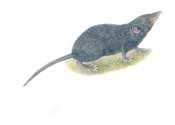A roly-poly pika gathers much moss
In some mountain ranges, Earth's warming climate is driving rabbit relatives known as pikas to higher elevations or wiping them out. But University of Utah biologists discovered that roly-poly pikas living in rockslides near ...









